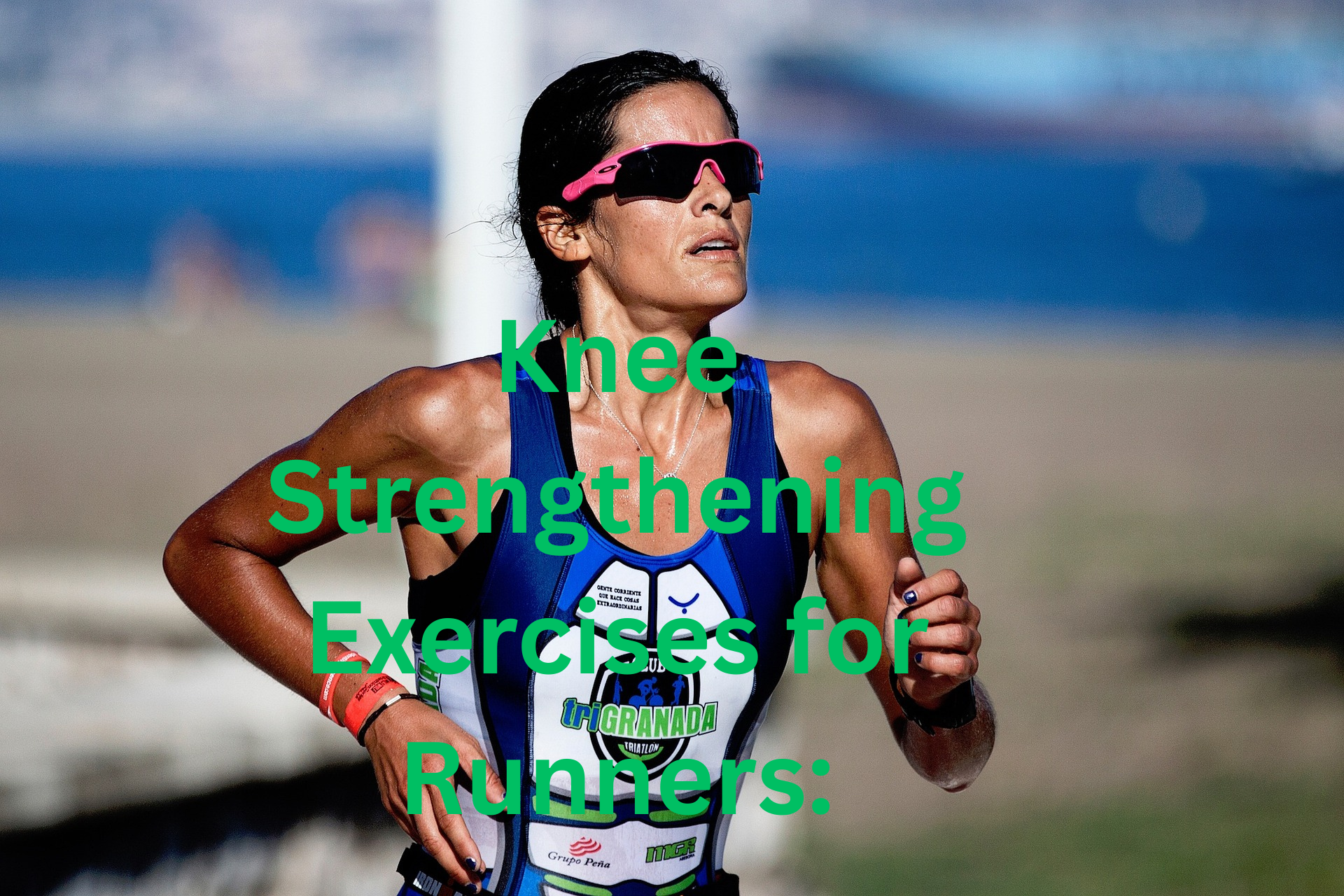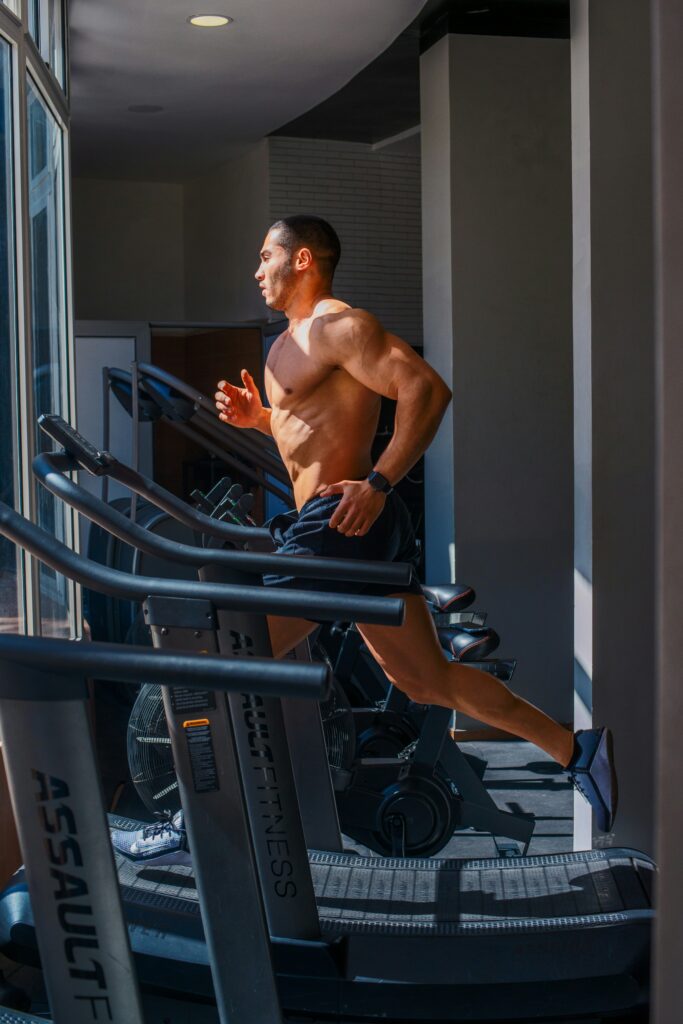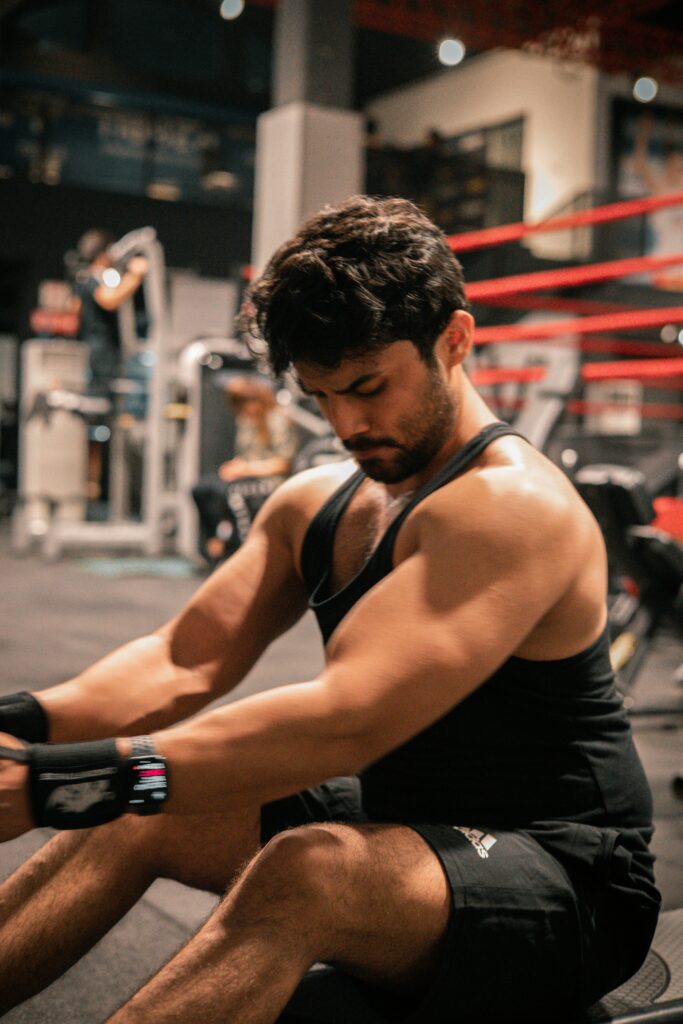Running is one of the most accessible and effective forms of cardio, but it also comes with its fair share of stress—especially on the knees. If you’ve ever felt that nagging discomfort after a long run or struggle with runner’s knee, you’re not alone. The good news? With the right knee strengthening exercises, you can build resilience, improve performance, and keep injuries at bay.
In this comprehensive guide, we’ll explore the best knee exercises for runners, understand how to strengthen knees for running, and set up a practical routine to integrate into your training week.
Why Knee Strengthening is Crucial for Runners
Whether you’re a beginner or a seasoned marathoner, your knees take a pounding. Each stride sends force through your knee joint, and without proper muscular support, this can lead to overuse injuries like patellofemoral pain syndrome (runner’s knee), IT band syndrome, and patellar tendinitis.
Strong, stable knees:
- Help distribute impact more evenly
- Improve running efficiency
- Prevent long-term joint degeneration
- Reduce the risk of knee pain and injury
Understanding Knee Mechanics in Runners
The knee joint relies heavily on surrounding muscles—particularly the quadriceps, hamstrings, glutes, calves, and hip stabilizers—for support and alignment. Weakness or imbalance in any of these areas can compromise knee tracking and cause pain.
That’s why effective knee strengthening routines for runners don’t just isolate the knee—they train the entire kinetic chain.
10 Best Knee Strengthening Exercises for Runners
Whether you’re battling runner’s knee or just aiming to prevent knee injuries from running, these exercises will target the entire lower kinetic chain — quads, hamstrings, glutes, hips, and calves — to improve knee joint strength, control, and endurance.
1. Wall Sits
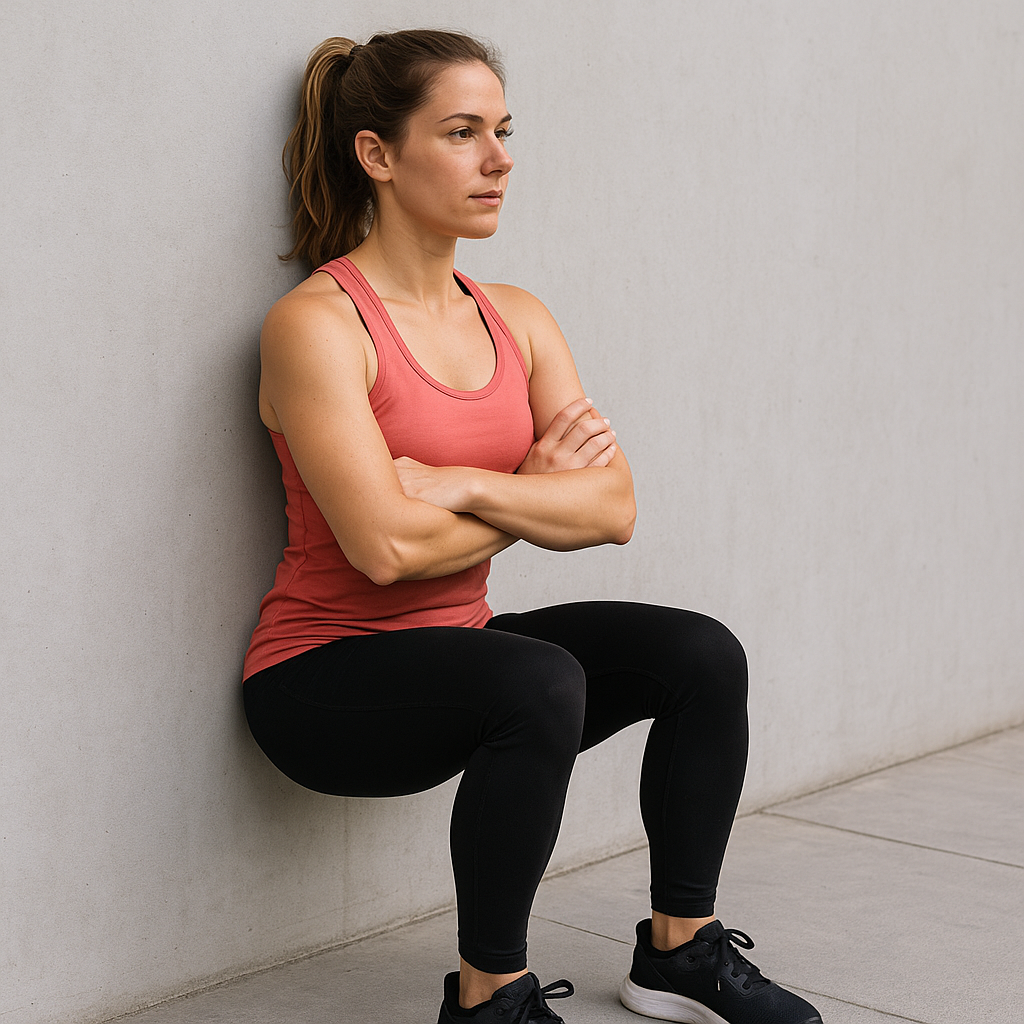
Muscles Worked: Quadriceps, glutes, hamstrings
Duration: 30–60 seconds
Reps: 3–4 rounds
How to Do It:
- Stand against a wall, feet shoulder-width apart, 2 feet away from the wall.
- Slide down until your thighs are parallel to the ground like sitting in an invisible chair.
- Keep your knees directly over your ankles and back flat against the wall.
Pro Tips:
- Avoid letting your knees go past your toes.
- Add a resistance band around your knees to activate glutes.
Why it works:
Builds static strength in quads and increases muscular endurance — perfect for long-distance runners.
2. Step-Ups (with or without weights)
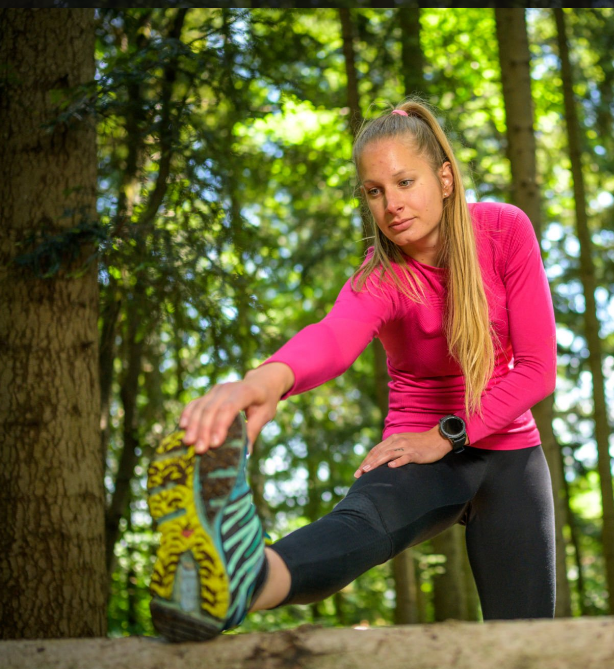
Muscles Worked: Glutes, quadriceps, calves
Reps: 3 x 10–12 per leg
How to Do It:
- Use a stable bench or box (knee height).
- Step up with your right leg, press through your heel, and bring your left knee up toward your chest.
- Step down and repeat on the same side before switching.
Variations:
- Add dumbbells to increase difficulty.
- Slow the tempo for greater time under tension.
Why it works:
Functional and mimics real-life motion, helping train balance, coordination, and knee drive.
3. Glute Bridges
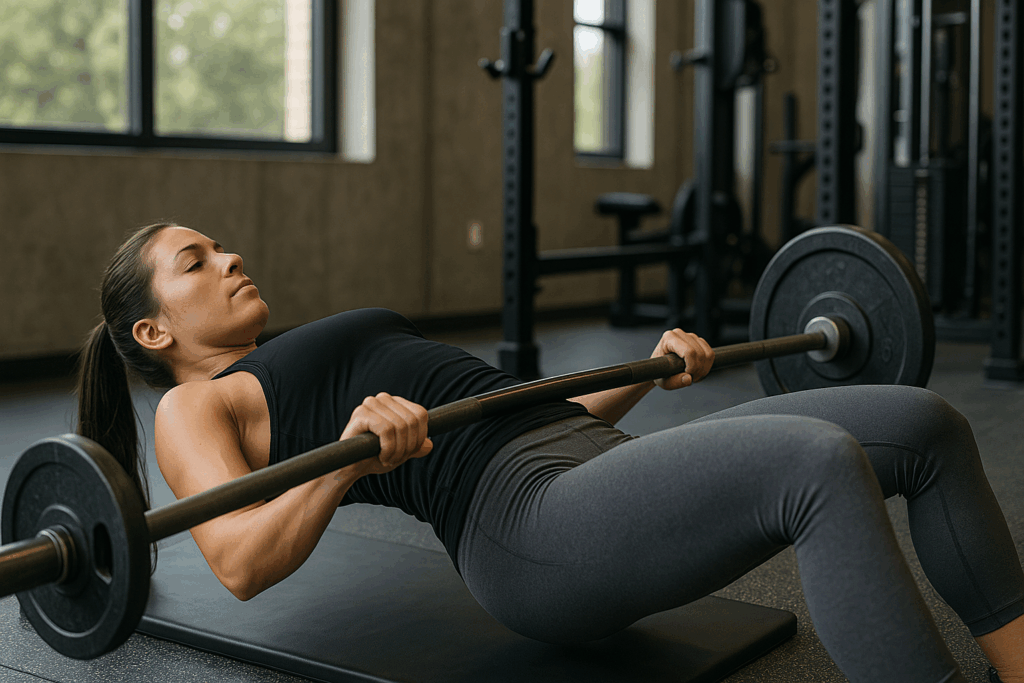
Muscles Worked: Glutes, hamstrings
Reps: 3 x 15
How to Do It:
- Lie on your back, feet flat, knees bent, arms at your side.
- Press through your heels to lift your hips until your body forms a straight line.
- Squeeze your glutes at the top, hold for 2 seconds, and lower down.
Progression:
- Try single-leg glute bridges for more challenge and to correct imbalances.
Why it works:
Weak glutes often lead to knee instability — this move activates the posterior chain to provide better knee support.
4. Single-Leg Deadlifts
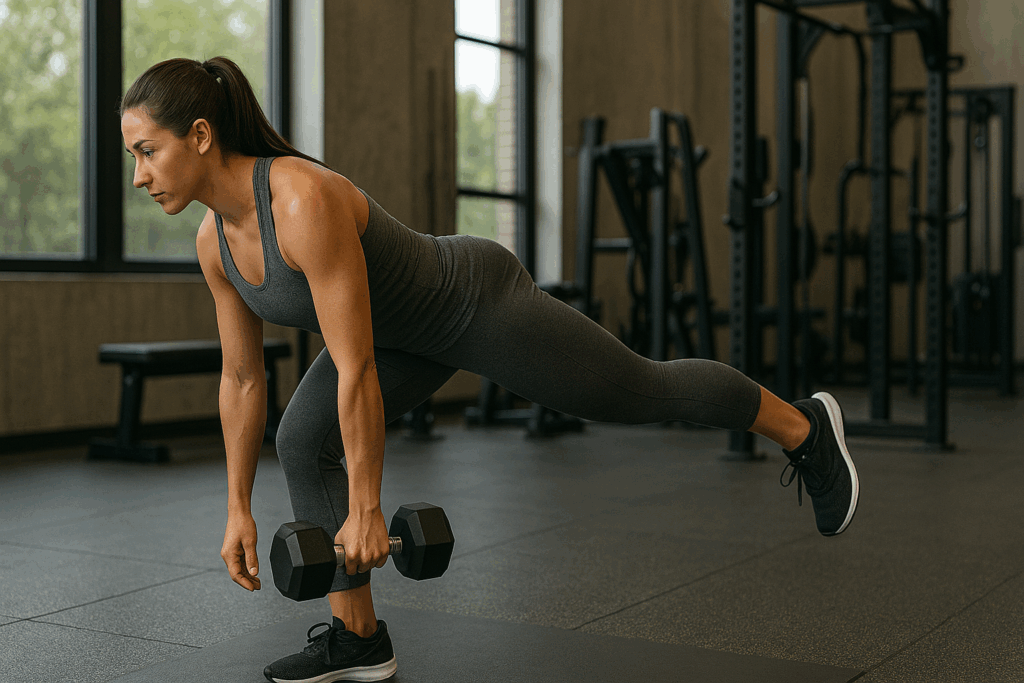
Muscles Worked: Hamstrings, glutes, core
Reps: 3 x 8–10 per leg
How to Do It:
- Stand on one leg, hold a dumbbell or kettlebell in the opposite hand.
- Hinge at your hips, lowering the weight while extending the back leg.
- Keep your back flat and core tight. Return to start.
Tips:
- Focus on balance and slow, controlled movement.
- Start with bodyweight until you master form.
Why it works:
Targets hamstring strength and improves stability, helping runners avoid knee valgus.
5. Lateral Band Walks
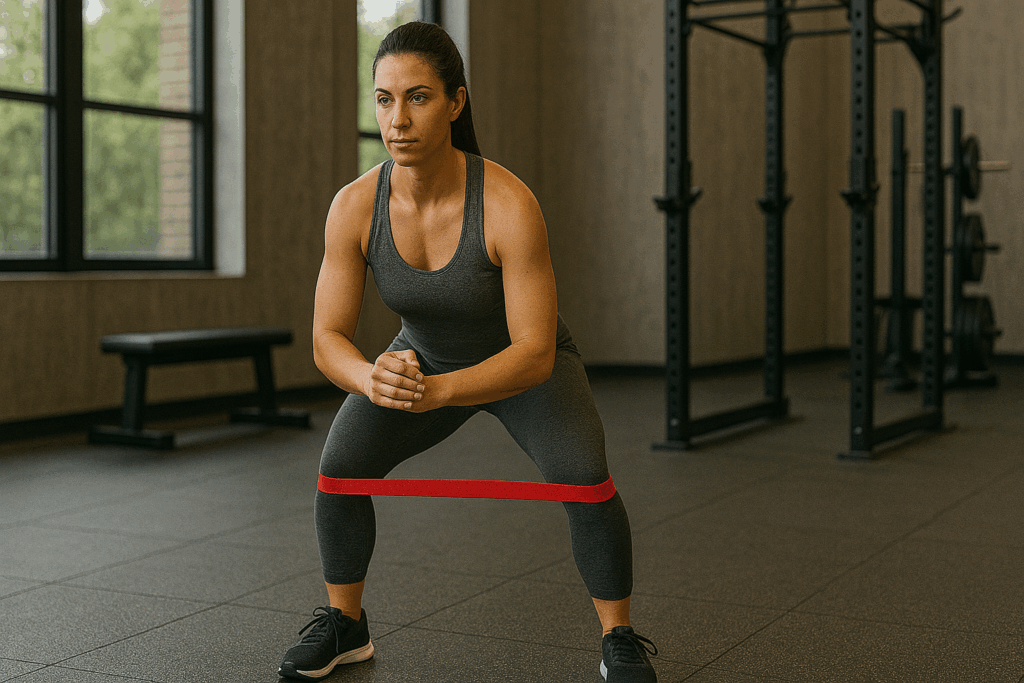
Muscles Worked: Glute medius, abductors
Reps: 3 x 10–12 steps each direction
How to Do It:
- Place a mini resistance band around your thighs or ankles.
- Get into an athletic stance with knees slightly bent.
- Take small steps sideways while maintaining tension in the band.
Why it works:
Activates hip stabilizers, key for preventing the knees from collapsing inward during running.
7. Bulgarian Split Squats
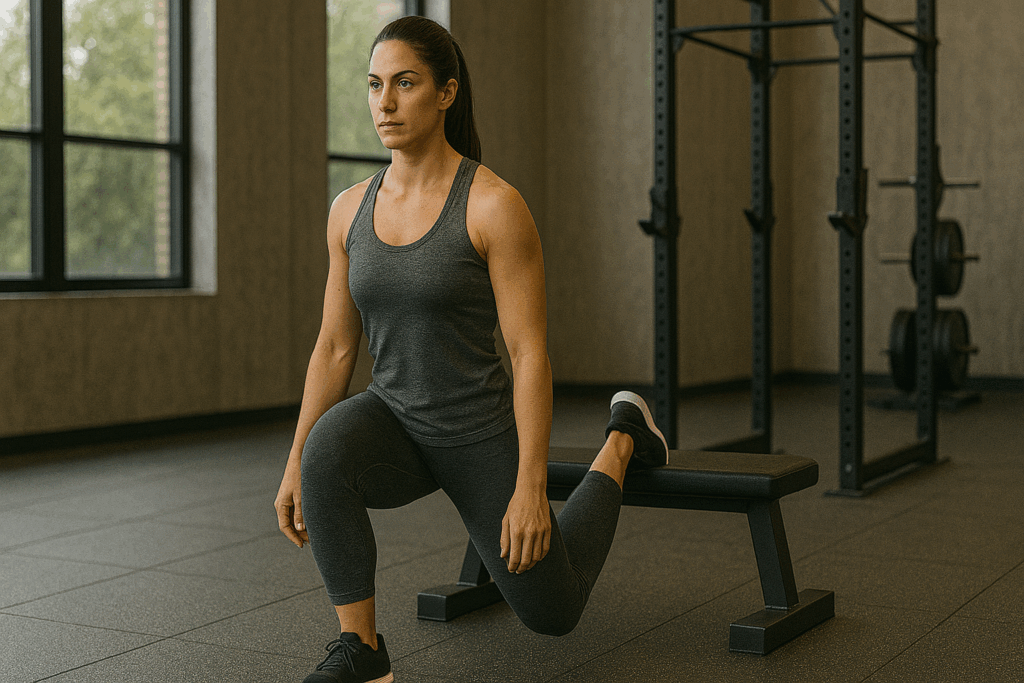
Muscles Worked: Quads, hamstrings, glutes, core
Reps: 3 x 8–10 per leg
How to Do It:
- Stand a few feet in front of a bench. Place one foot behind you on the bench.
- Lower into a lunge position, keeping your front knee aligned.
- Push through the front heel to return to start.
Why it works:
Builds unilateral leg strength and corrects imbalances that can overload the knees.
8. Box Squats
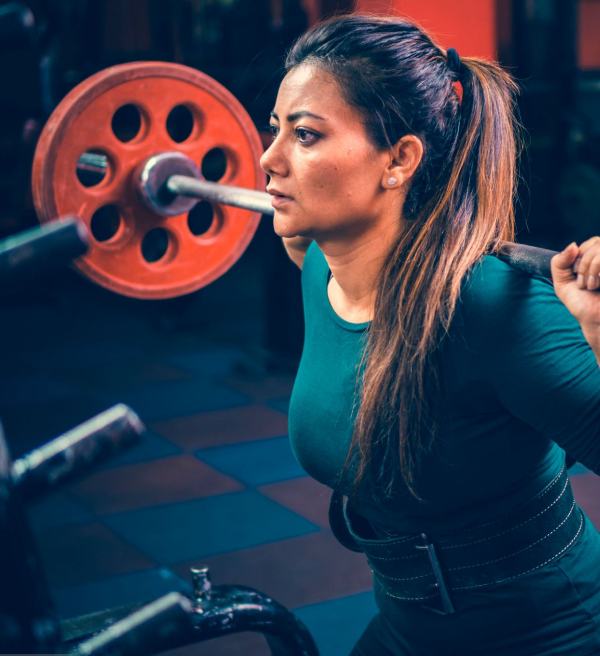
Muscles Worked: Glutes, quads
Reps: 3 x 10–12
How to Do It:
- Sit back onto a box or bench as if you’re sitting in a chair, then stand back up.
- Keep shins vertical, knees behind toes.
Why it works:
Encourages proper squat form and reduces strain on knees, great for beginners or those returning from injury.
9. Standing Hip Abduction

Muscles Worked: Glute medius
Reps: 3 x 15 per leg
How to Do It:
- Stand tall and lift one leg out to the side without tilting your torso.
- Use a resistance band for extra challenge.
Why it works:
Supports hip and knee alignment during running strides.
10.Heel Slides
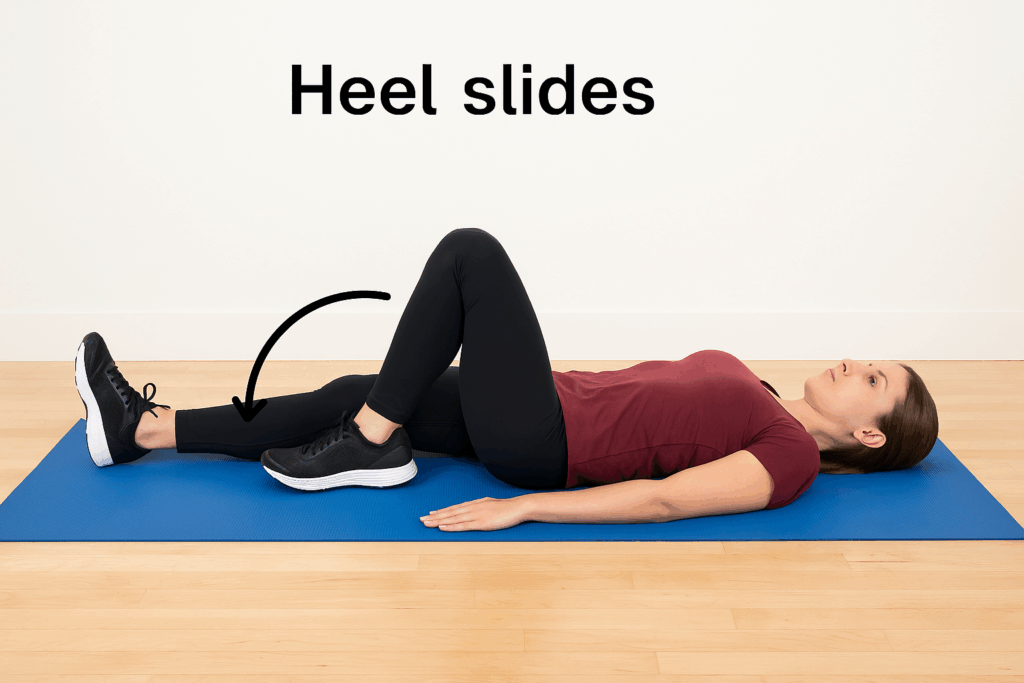
Muscles Worked: Hamstrings, knee flexors
Reps: 3 x 12
How to Do It:
- Lie on your back, feet flat on the floor.
- Slowly slide one heel toward your butt while keeping your foot on the ground.
Why it works:
Great for rehabbing sore knees or starting a strengthening program gently.
Additional Tips to Prevent Knee Pain While Running
- Warm up properly before every run to increase blood flow.
- Incorporate strength training 2–3 times per week.
- Avoid overtraining—follow the 10% rule for mileage increases.
- Use proper footwear suited to your gait and terrain.
- Stretch your quads, hamstrings, calves, and IT band after each session.
When to See a Doctor
If you’re experiencing persistent or sharp pain despite doing the right exercises, it’s time to consult a physical therapist or sports medicine doctor. You may be dealing with something more serious like meniscus issues or ligament strain.
Strong Knees, Strong Runs
Knee pain doesn’t have to be part of your running story. With the right knee strengthening exercises, you can run longer, feel better, and reduce injury risk dramatically. Make it a habit, stay consistent, and your knees will thank you with every mile.

